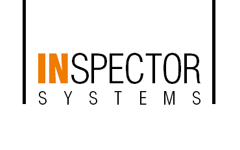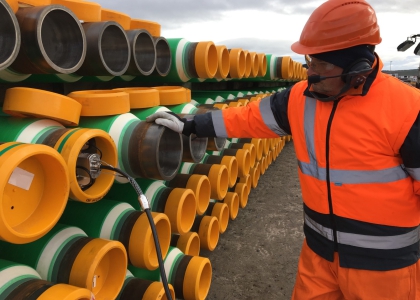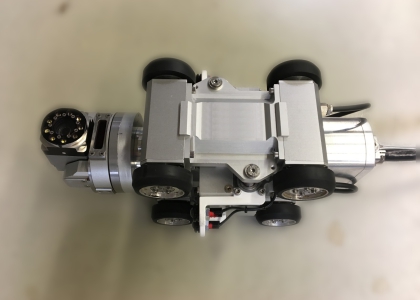Visual robot inspects cladding before installation - For the further exploration of an oil field situated in the South Western part of the Campos Basin off the Brazilian coast, 10 and 12 inch pipelines several kilometres in length will be installed in the sea using the so-called reel-lay method.
As part of this exploration process, INSPECTOR SYSTEMS was selected for the quality control of the metal cladding of the inner pipe surfaces.
The contract essentially comprised the project management and the provision of inspection services that were required for the camera inspection of the MLP pipes (mechanically lined pipes) for this project. The pipe sections to be inspected with a length of 12 metres each were stacked vertically. As the maximum height, four rows were stacked on top of each other. Added up, this resulted in about 3000 pipe sections that had to be inspected visually within only 60 days, representing quite an athletic challenge.
The visual inspection was carried out in each case from one pipe end using a remote-controlled and wired Type 4.000 video laser inspection robot. This was combined with a single drive unit that could handle the respective pipe length of 12 metres.
Multi-functional inspection head
The inspection head itself is seated on a 360° rotating unit. It brims with high tech and comprises a high-resolution colour camera with 10x optical zoom and automatic focus as well as a ring of LEDs for optimal illumination of the space to be inspected. The pan-and-tilt function of the camera combined with the rotating unit permitted detailed detection of every single spot of the surface.
The inspection of all pipes was a requirement of the project operator, one of the largest listed oil & gas companies in the world. The inspection ensured that there were no corrosion spots on the respective pipes before the installation of these. Undetected, corrosion damage could result in an undesirable reduction of their service life in later operation. Any work that might become necessary due to this and, above all, additional costs, could virtually be excluded by the inspection carried out beforehand.



